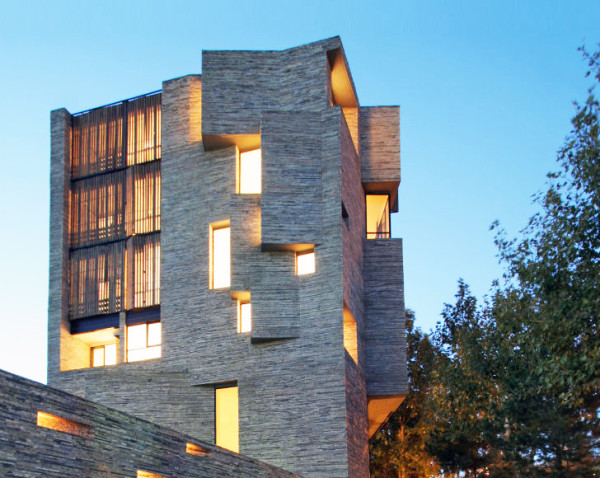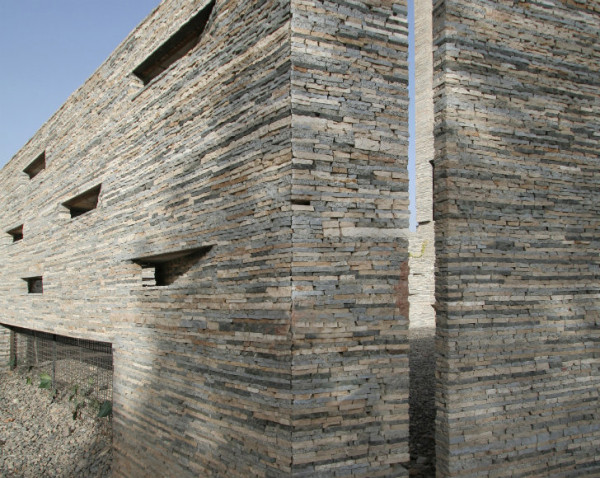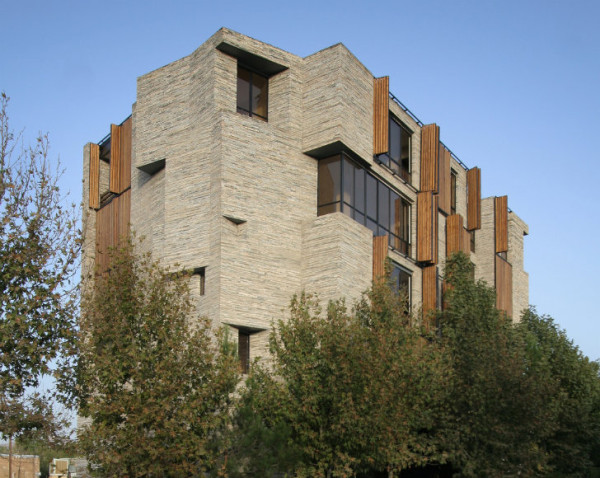In this sad era of gargantuan strip mining and mountaintop removal operations that scrape at the tired earth to find the last pools of fossil fuel and precious minerals, it’s refreshing to see one housing project that actually makes use of even a tiny fraction of the rock waste being produced. It may not be as impressive as King Tut’s last house, but’s a great start.
It can be found in, of all places, Mahallat, Iran, a city notable for its thriving stonecutting economy. While the business of making tiles out of the huge travertine deposits in the region is profitable, it’s a terribly wasteful business. For every travertine tile that is carved out and finished, at least an equal amount is discarded as “waste” stone.

Architect Ramin Mehdizadeh of the Tehran firm Architecture by Collective Terrain (AbCT) decided to do something about this waste and devised a plan to build an entire block of flats out of these allegedly worthless piles of scrap stone. The result is an alluring structure known as Apartment No. 1, with five stories, eight three-bedroom residential units, a ground-floor space reserved for retail and faceted outer walls made almost entirely out of waste travertine.

Because the waste cuttings are roughly all the same thickness, if not size and shape, they were easy to pile horizontally to create sturdy, well-insulated walls via thermal massing, Mehdizadeh recently told Dezeen magazine. “The form is very familiar for the people, because the origin of this form is the quarries, and that’s why even a contemporary piece of architecture could sit here easily,” he said in the article.

Care was taken to select stones of the right size and color to create organic patterns in the finished walls. Panels jut out at various angles around the envelope to provide a great or lesser degree of direct sun through windows, depending on the heating needs inside. Along the walls with the most sunlight, wooden shutters, made from locally harvested timber, can be drawn to provide cool shade in the day and opened for ventilation in the evenings.
The 4,500-square foot Apartment No. 1 was completed in 2010, but has gained international interest again after was listed as one of the one of 20 finalists for the Aga Khan Award 2013, alongside. Finalists in the various categories will be announced later this year and move on to compete for the for the ultimate $1 million prize.